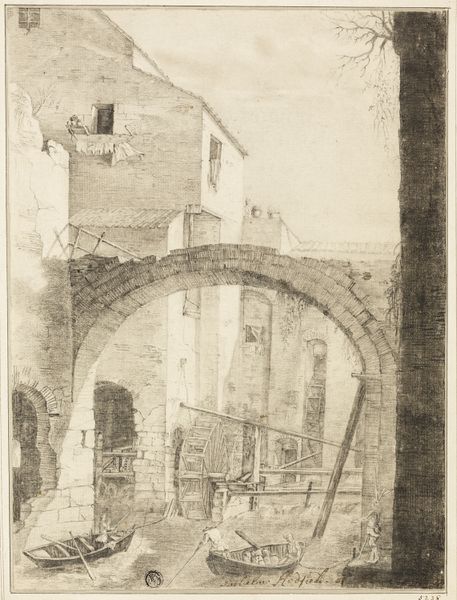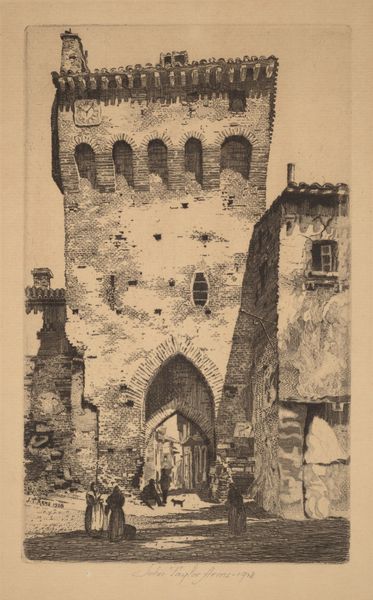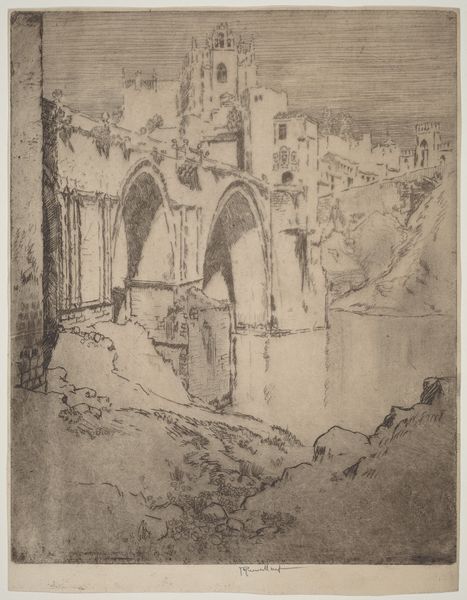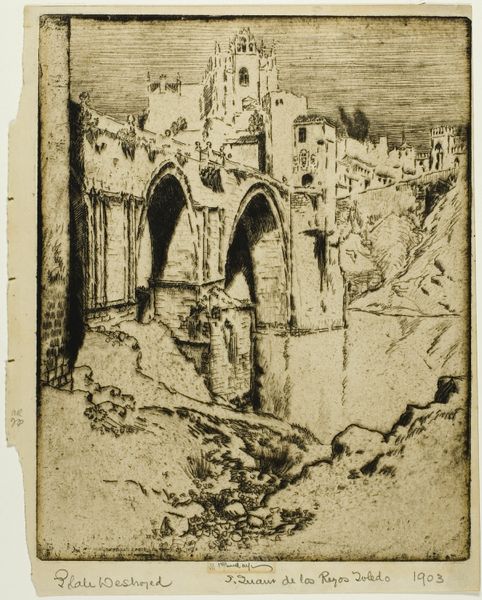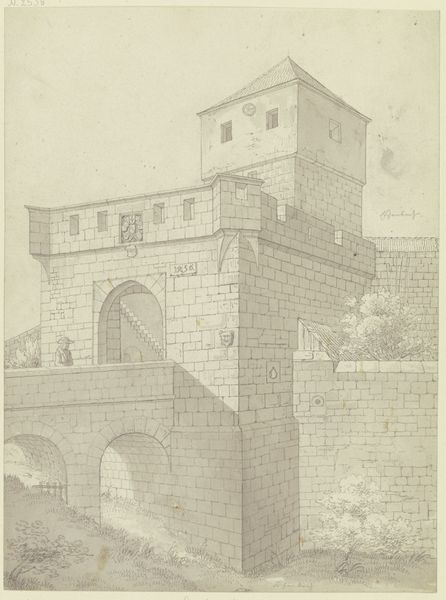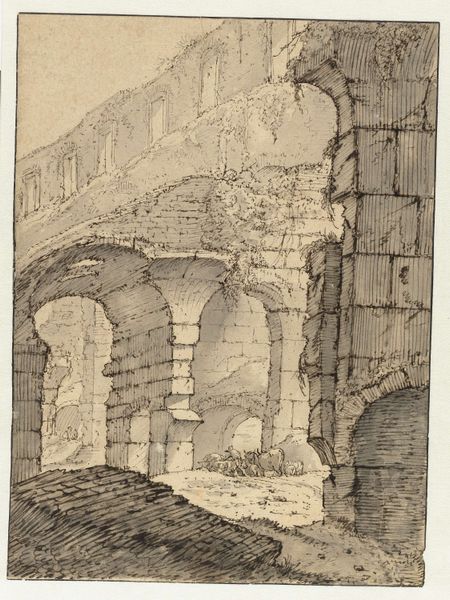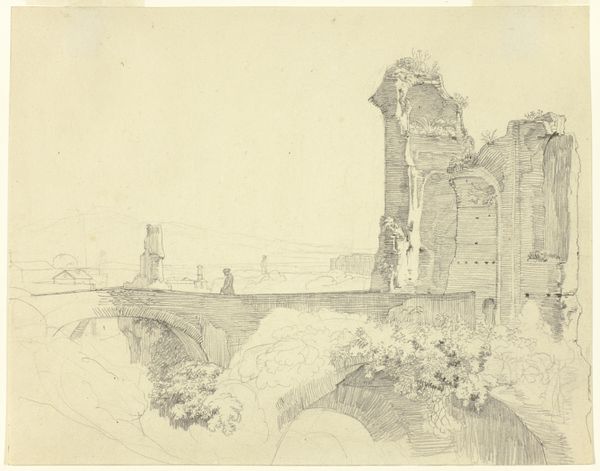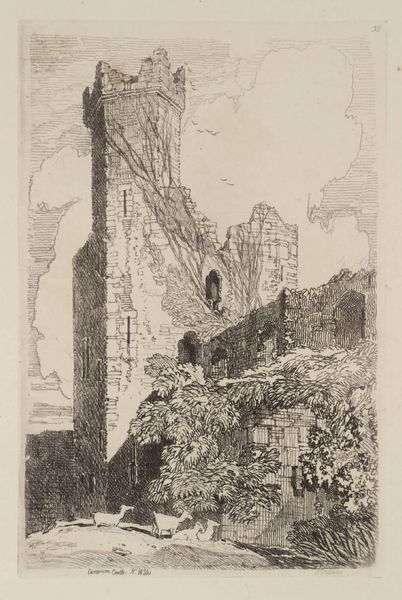
drawing, ink, pen
#
drawing
#
pen sketch
#
pencil sketch
#
landscape
#
ink
#
geometric
#
line
#
pen
#
cityscape
#
realism
Dimensions: 32 x 26 cm
Copyright: Public domain
Curator: Isn't this ink drawing by Fernand Combes marvelous? He calls it "Sospel, Le Pont Vigie," created back in 1925. I find the way he's built up texture with those tiny lines so captivating. Editor: Absolutely. There's something haunting about it, isn't there? Like looking at a memory slowly fading. All those stones sketched in painstaking detail; it feels weighty, historical. A sentinel. Curator: It's fascinating to consider Combes's perspective. Working during the interwar period, cityscapes like this became popular ways of showing how places held on to the past even as the world raced towards modernity. Sospel is this little town in the south of France that felt forgotten, even then. Editor: It certainly does capture a sense of forgotten history. I keep getting pulled back to the viewpoint - this weird sort of voyeuristic angle, as if the artist is in the structure itself looking outward. It is definitely an intimate glimpse. How might viewers in 1925, living through all of that political and social instability, engage with an image that makes this forgotten-ness the entire focus? Curator: I see that tension too. These structures embody both refuge and exposure. I wonder, given the pen and ink medium, and the relatively small scale, was Combes intending for this work to have any real public-facing message? It feels to me like something much more personal, less about Sospel and more about Combes himself. The details—every brick, every roof tile rendered with such care. Editor: It is a fascinating question. What I do know is that throughout history, representations of monuments have been carefully constructed tools of state. Was this bridge just some architectural object for him? I would doubt it. The very act of isolating it this way gives the bridge monument status. Curator: Maybe the point is, the past isn't really dead, it’s actually still everywhere, informing the present whether we acknowledge it or not. What do you think, can the monumentality still work if it feels almost... private? Editor: I think that private aspect might be precisely where its power lies. Combes captures the anxiety of living among the ruins of prior generations, something that always seems deeply relatable across many different times. Curator: Yes, the fragility of memory, maybe, captured in ink. Thanks for helping me see this in a new light! Editor: Always a pleasure! This really emphasizes the ability of drawings to show us some complex sides of familiar places.
Comments
No comments
Be the first to comment and join the conversation on the ultimate creative platform.
